Monty Don reveals his tips for feeding birds through the winter
Supplement their natural diet with tasty morsels, and encourage feathered friends to return to your garden

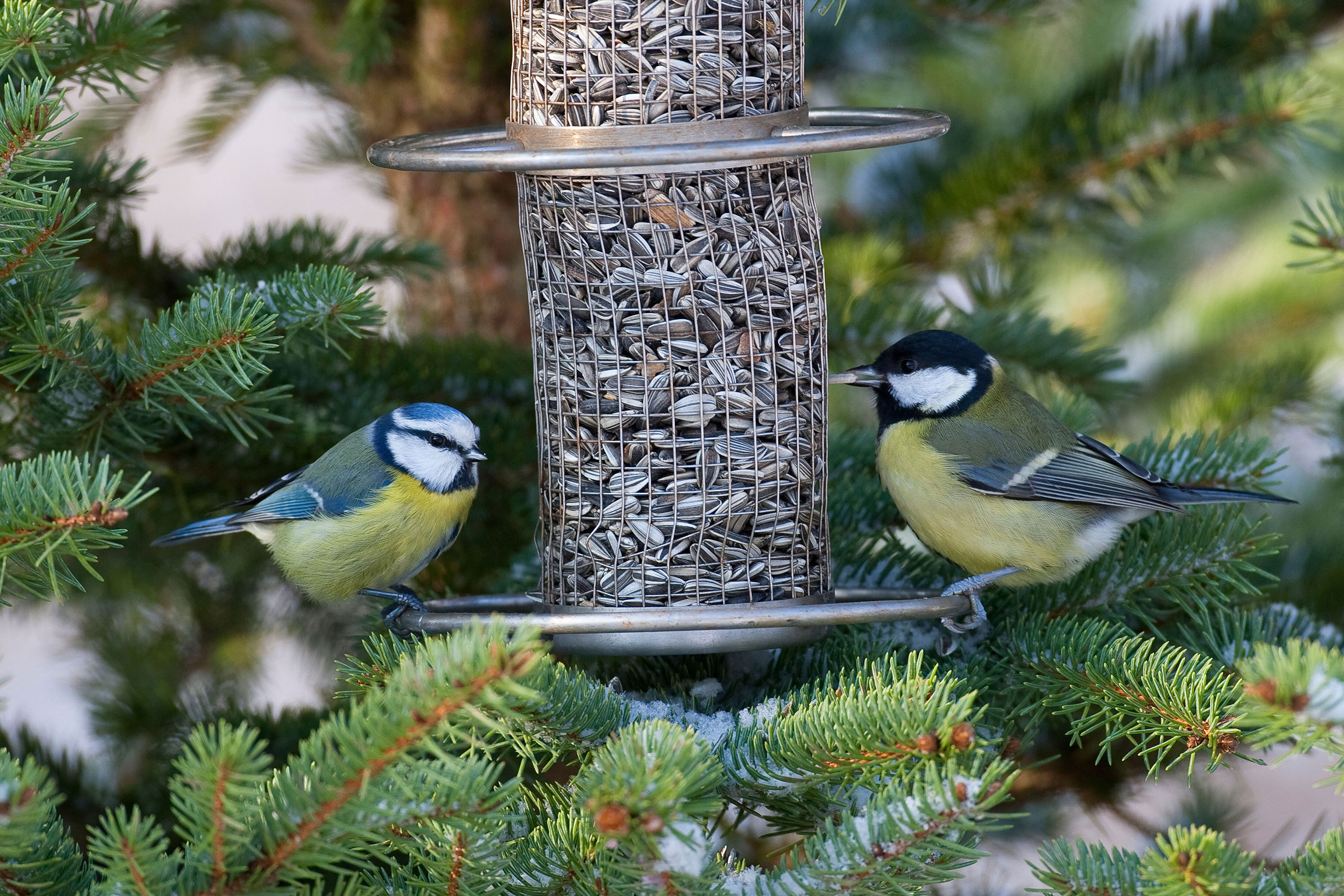
Do you notice that, when the temperatures drop and the dark evenings kick in, that you suddenly develop the appetite of a blue whale? Don't worry, we do, too. And so, for that matter, do our feathered friends. Which is why Monty Don's bird feeding tips couldn't have come at a better time.
It's so important, if you can, to supplement a bird's winter diet by leaving treats and scraps out in the garden. Not only will it help them stay fit and well through the coldest months, it will have the added benefit of attracting them to your garden.
Writing on his website – montydon.com – this month, Monty notes that feeding bird in winter is one of his priorities in the garden in November.
'As the weather changes, the birds greedily feed off any seeds and berries in the garden,' he notes. 'But they soon get taken. So supplementing this natural supply both helps them and provides a fascinating chance to share and observe their world.'
'In fact I would say that one of the things I most enjoy about winter is watching the birds feed at the table outside our kitchen window. It may not have the glamour of going on safari or a trip to the Galapagos. But it is just as rewarding and right on every gardener’s doorstep.'
Here are a few of Monty's tips for keeping garden birds well nourished and coming back for more.
Also see... Wildlife garden ideas, from The National Trust’s garden experts
Design expertise in your inbox – from inspiring decorating ideas and beautiful celebrity homes to practical gardening advice and shopping round-ups.
1. Choose high-calorie food

'Obviously it helps for the food to be as calorific as possible and seeds, nuts and fat are best of all,' writes Monty.
Other foods to try include leftover pastry or cooked potatoes (never raw). Blackbirds and thrushes love to eat fresh fruit, and bread and rice are perennial favourites and perfectly good for birds.
One possible surprise on the list is grated cheese, but lots of birds will enjoy it.
2. Avoid anything salty
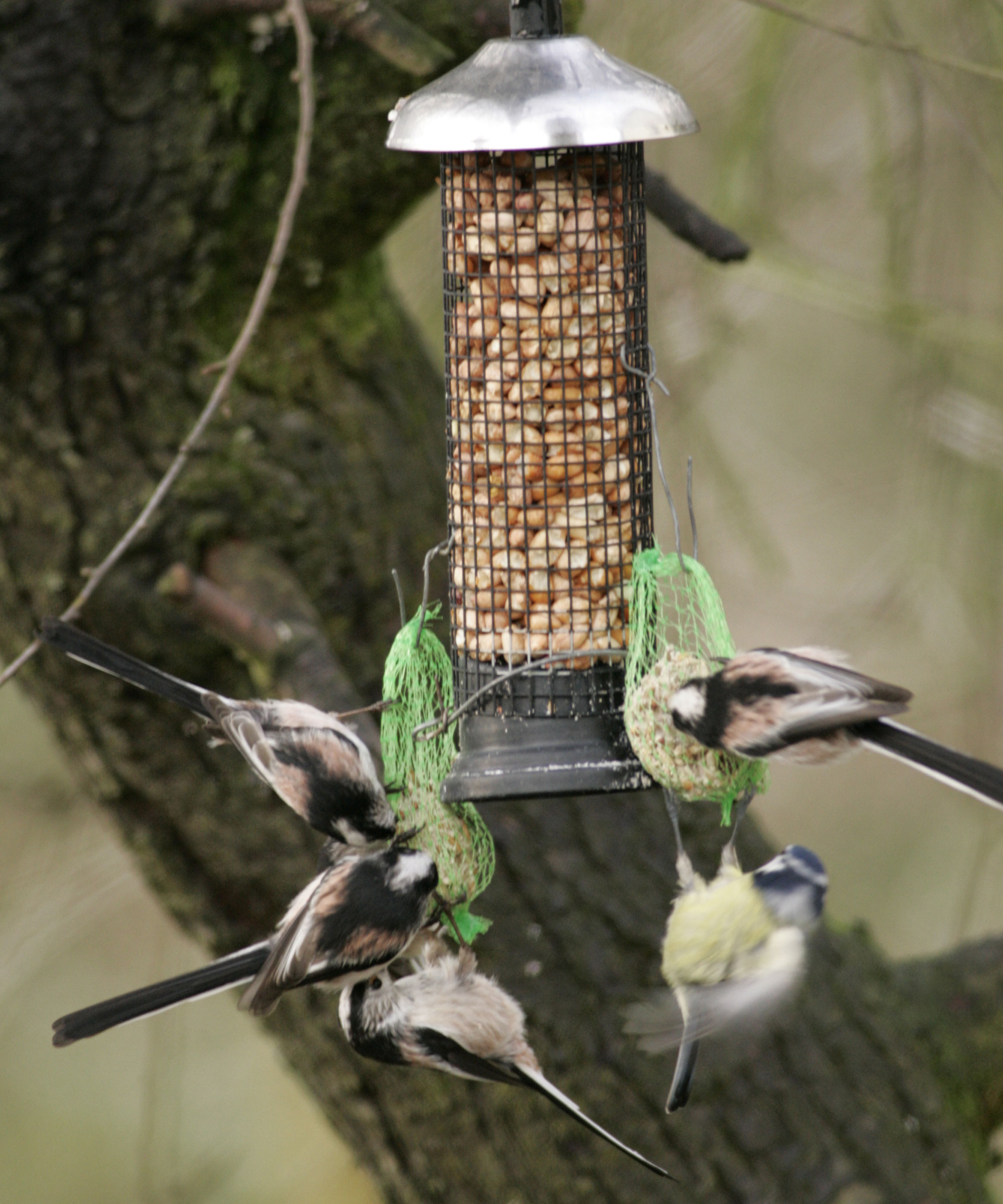
Cutting down on salt isn't just a good idea for humans – it's better for birds, too. Steer clear of leaving crisps, salted nuts or bacon out for them to eat, and stick to Monty's favourites.
That said, birds do love (non-salty) peanuts, Monty says. His advice, though is to put peanuts in a specialist feeder in a shrub or tree where birds can reach it but squirrels and rats can't.
Make sure any peanuts you feed are high quality bird food. Salted and dry roasted peanuts should never be fed to birds.
'I buy dried mealworms too which robins, tits and wrens gobble up greedily,' he says. 'If in doubt sunflower seeds and fat-balls – preferably hanging so tits can land on them without being bullied away by more aggressive birds – are invariably popular.'
3. Find seeds to suit smaller birds
Finches, tits, sparrows and siskins enjoy niger seeds, which can be sprinkled on to a log (see below for more on that) or put into a specialist feeder. These tiny seeds are particularly useful to have to hand for small birds who sometimes lose out to larger ones.
4. Fill a log with seeds
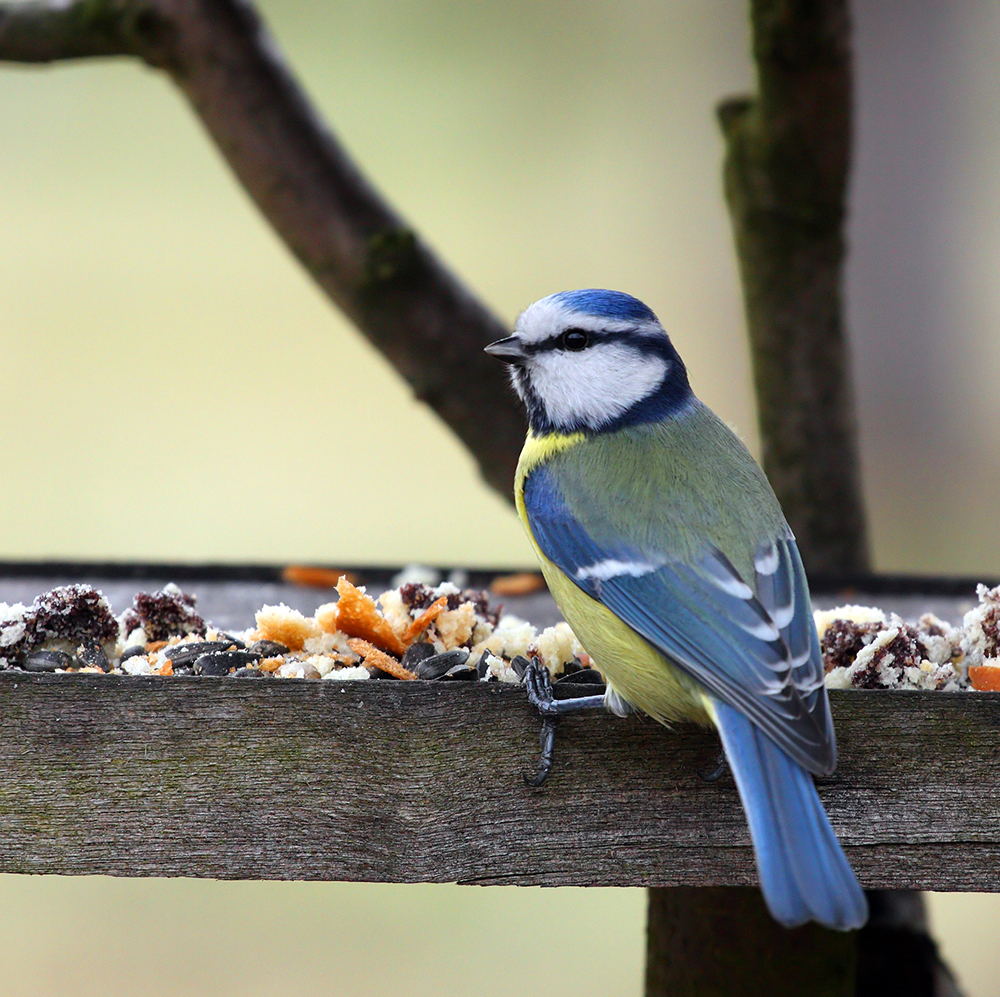
One problem with leaving food out for the birds is that less welcome visitors – such as pigeons or starlings – might eat it all up, leaving none for robins, blue tits and other species.
To stop this, Monty has a neat trick. 'Find an old log with lots of cracks and crevices and pour seed over it,' he suggests. 'The smaller birds will extract every last bit from the fissures that bigger ones cannot reach.'
5. If you only pick one food, pick sunflower seeds
Although Monty recommends a good mix of seeds, nuts and fats for feeding birds over the winter, he is also on record as saying that the very best food is sunflower seeds – if you're only going for one bird food. These come with and without husks – note that many birds prefer the husks removed, so choose those if you have the option – but bear in mind that other birds' beaks can cope with the husks, so a mix is great.
And if you grow sunflowers in your garden, don't chop them down when they've stopped flowering – the heads will be picked clean by hungry and grateful birds from the autumn onwards.
6. Top up regularly
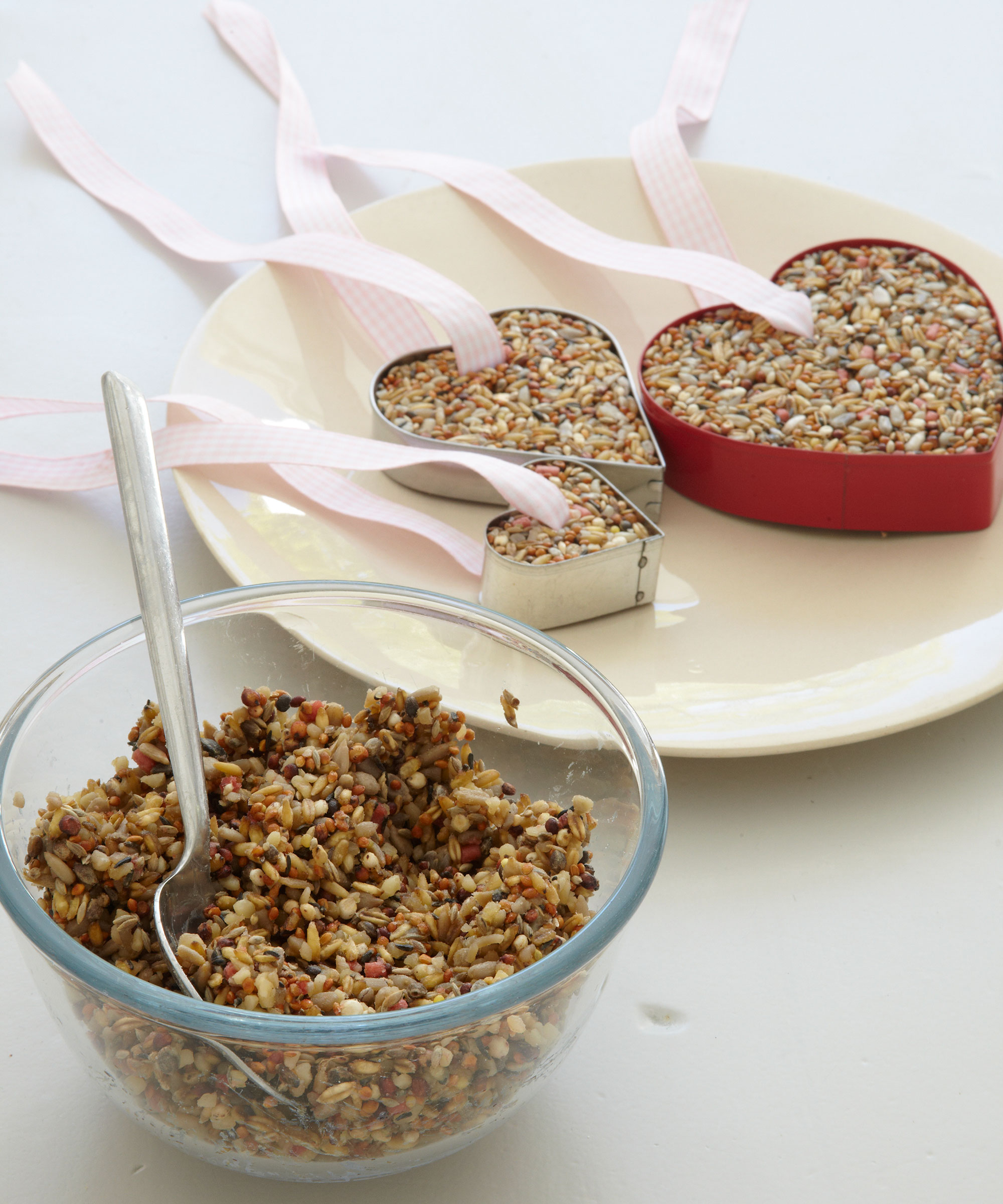
Hopefully, the local birds will enjoy your garden spread and want to pop back for more. If that's the case, you must remember to keep adding to your supply, as Monty explains. 'Birds use up precious energy in coming to your bird table, which is then wasted if it is bare.'
He also encourages us to 'leave a fresh supply of water for them to drink, especially in freezing weather.'
For more of Monty's tips, follow him on Twitter @TheMontyDon
7. Give birds more than one place to feed
Monty's bird feeding table is devoted to wildlife in the colder months but when there's an abundance of natural food in warmer weather he uses the table for displaying and storing pot plants.
However, he's at pains to stress that it’s important to create different feeding spots for different birds around the garden – something you'll recognize as important if you have ever witnessed larger birds try to land on feeding stations for smaller birds – or smaller birds being chased off feeding stations by more aggressive ones (robins, we're looking at you).
8. Plant shrubs
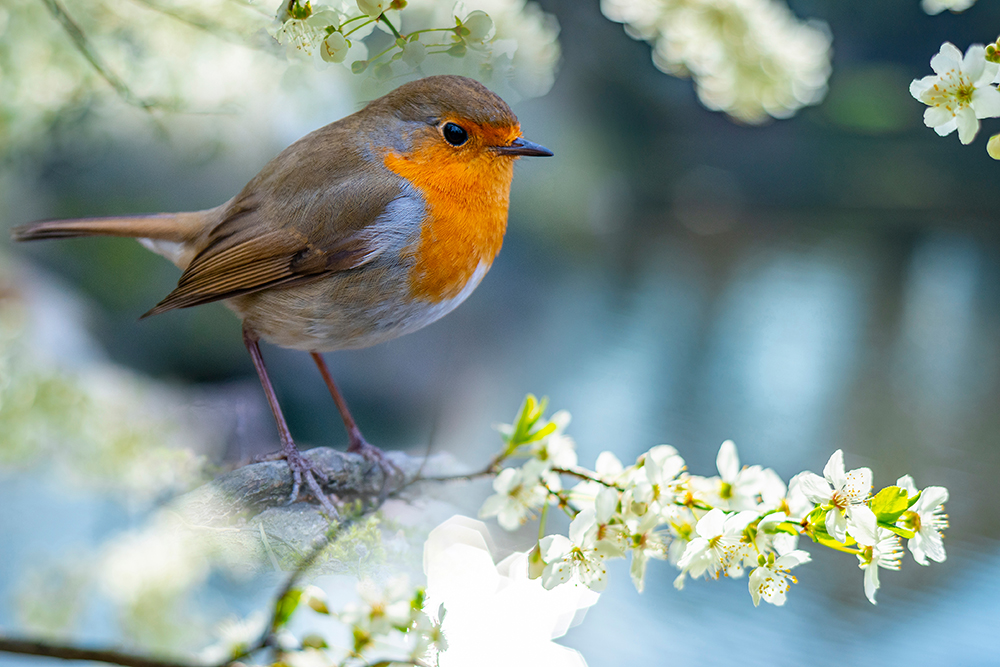
As well as providing a variety of seeds, nuts, grains, fruits and fats, adding shrubs to your garden with attractive berries for the birds to feed on is a wise move.
'As well as providing food, berries bring a splash of color to your garden when a lot of trees are bare.' says Sarah Squire, Chairman of Squires Garden Centres.
'You’ll have striking berries in the winter then beautiful blossom in spring, and some plants have evergreen leaves year-round. Try Pyracantha Saphyr Orange which is an upright shrub with glossy green leaves and orange-red berries, or Cotoneaster Cornubia’which has delicate white flowers in May followed by distinctive red berries in winter.'
9. Don't forget to offer birds water
Just as it is for humans and pets, a fresh water supply is a must for birds, advises Monty. If yours is in a shallow bird bath, make sure you pop out during frosts to break the ice for them.
10. What can you feed birds from your kitchen?
You can feed birds fruit, such as apples, bananas, melons and raisins, plus some of their seeds, such as melon, pumpkin and squash seeds – but always check because some seeds don't suit birds (see more below). They will also enjoy carbohydrates and some proteins/fats, such as cooked pasta and rice, hard cheese and peanut butter.
As with feeding any animal (or human), check first if what you have chosen is suitable and go for a modest balance. Plus, it's vital to ensure that these items can't be reached by rats or you will find yourself with a real pest problem fairly quickly.
11. What should you not feed birds?
Avoid anything with too much fat or salt in it, plus onions and garlic, fruit pits and apple seeds, chocolate and avocado leaves.

Amy Cutmore is Editor-in-Chief, Audience, across Future's Homes portfolio. A homes and interiors journalist of 20 years standing, she has spent much of that time writing about technology, appliances and kitchens. While other people count how many countries they've visited, Amy tots up how many countries' washing machine factories she's toured (it's eight by the way, from South Korea to Slovenia). She can't leave the house without a decent pair of noise-cancelling headphones, and is always ready to explain an acronym – be it QLED, DAB or HDMI.